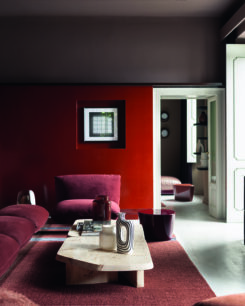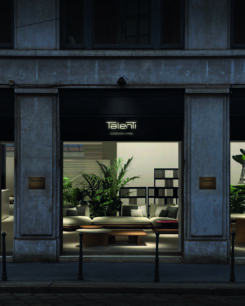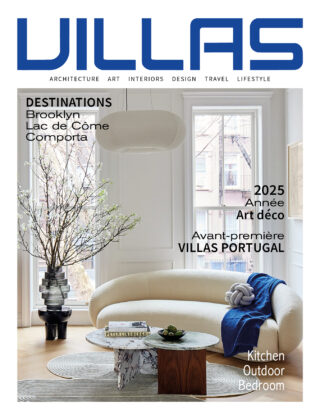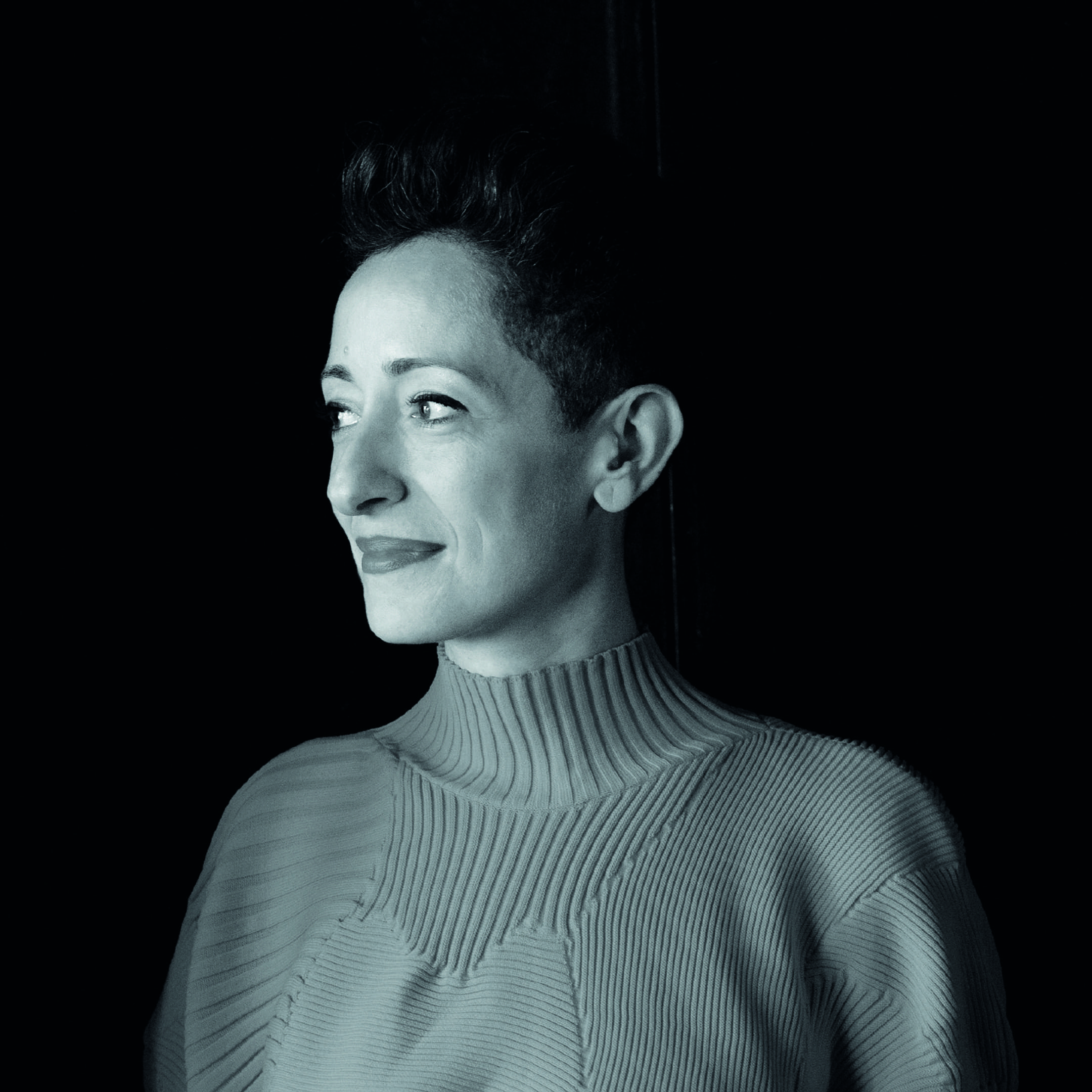
Portrait of Lina Ghotmeh. Photo: © Kimberly Lloyd
The graceful arches of this contemporary factory, reminiscent of a galloping horse, were designed by Franco-Lebanese architect Lina Ghotmeh. Encapsulating a social and environmental vision, the building captures the spirit of an “archaeology of the future”. Having been built on wasteland, it manages to conserve and express the memory of the site, echoing the values of the House of Hermès. As the first industrial building to be awarded the E4C2 label, the volume of the wooden structure can also be hailed as a technical and architectural feat. Its façade is adorned with 500,000 local clay bricks, sourced from a neighbouring factory, just 70 km away. This allows the project to keep down its carbon footprint while making the most of a regional tradition and a local material. The bricks offer a palette of nuanced tones, ranging from reds to purples, enhanced by natural light and its variations. The HPE bioclimatic building, with its carefully designed orientation and natural ventilation, is energy self-sufficient, with large bay windows and roof windows that let in plenty of natural light.
Energy needs are met by a geothermal system, with 13 probes placed 150 m underground.
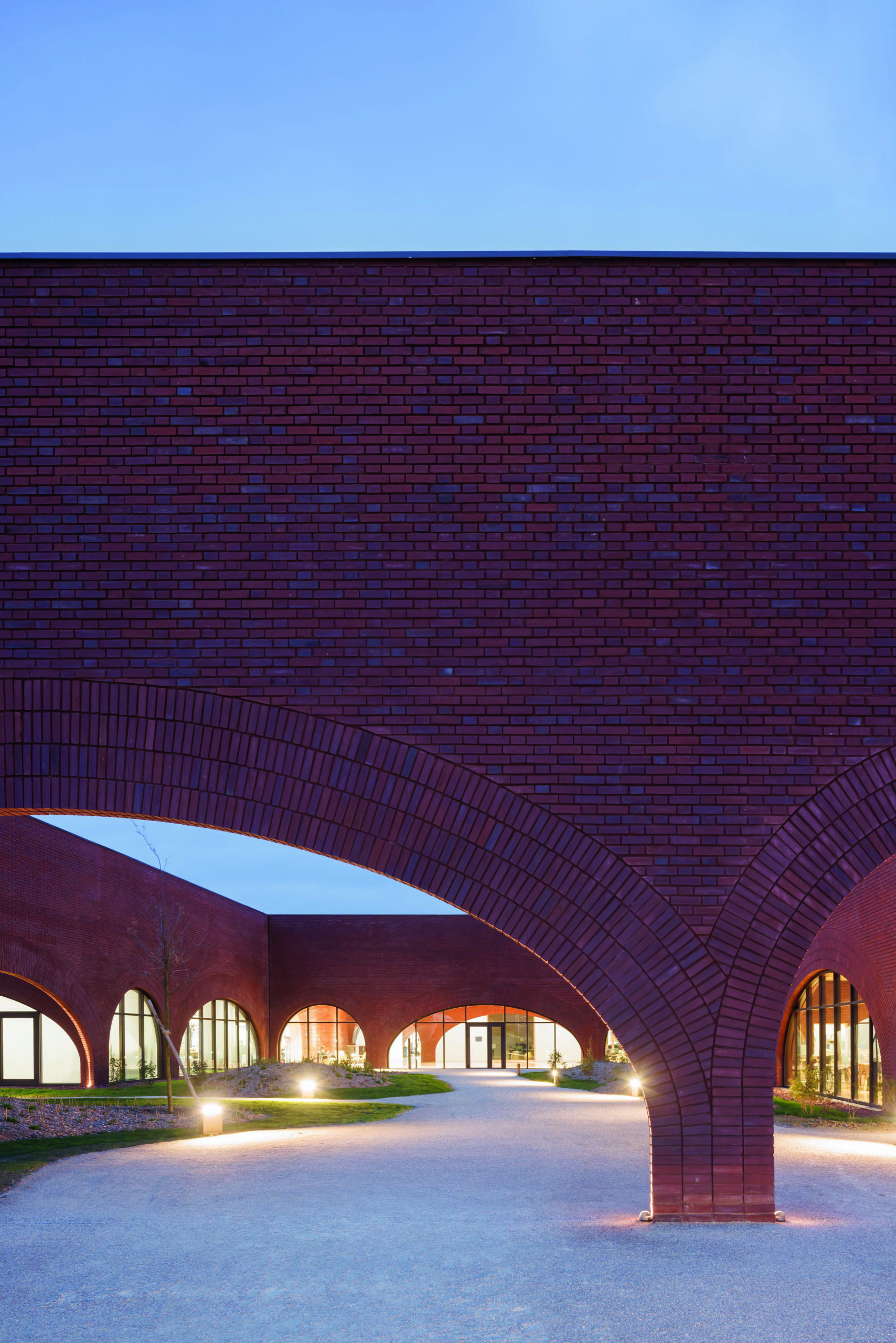
“Precise gestures” Ateliers Hermès Normandy France © Lina Ghotmeh – Architecture. Photo: © Iwan Baan/ © Hermès 2023
For the exteriors, using excavated earth from the site, landscape architect Erik Dhont designed a 3-hectare park reflecting timeless values that is a nod to the hilly surroundings. Even the car park was factored into his plans. The garden is equipped with a system for collecting and draining rainwater to underground water tables, which serves to bolster the resilience of the natural landscape. Most of the endemic trees have been conserved, preserving the existing wealth of biodiversity. From their workstations, the craftsmen can enjoy the spectacle of nature and the changing seasons. The square roof of the factory (90 x 90 m) is inspired by the dimensions of the emblematic Hermès silk scarf, measuring 90 cm on each side. It is also topped by 2,300 m2 of photovoltaic panels. Everything in this project has been conceived to limit consumption for lighting, heating and air conditioning.
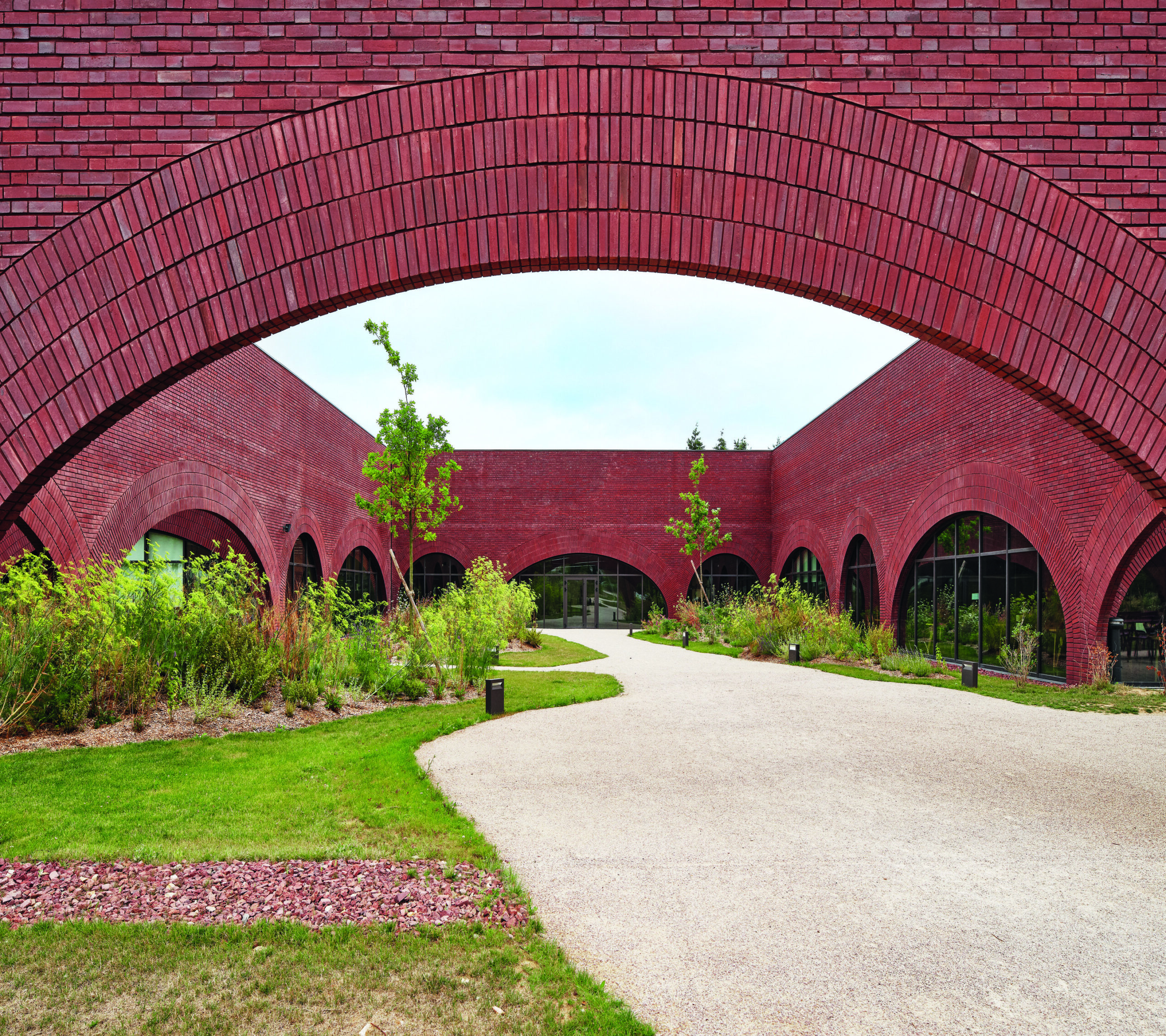
“Precise gestures” Ateliers Hermès Normandy France © Lina Ghotmeh – Architecture. Photo: © Takuji Shimmura / © Hermès 2023
At the heart of the site, the Place des Rencontres, designed as a village square, serves as a patio for people to meet up and collaborate. The space is dominated by the presence of a work by artist Emmanuel Saulnier, inspired by the Epson Derby, a painting by Théodore Géricault dating from 1821. The stainless steel hands, suspended by stirrup leathers made to measure by Hermès craftsmen, feature horizontal lines evoking the movement of horses under a luminous stormy sky. They tie in with the artisanal gesture of the expert hand. The 6,200 m2 building houses 280 craftsmen, 260 of whom are highly skilled graduates of the Hermès School of Craftsmanship in Louviers, which opened in 2022. The first saddlery workshop to be set up outside of Paris, it showcases the multiple skills developed by the Hermès leather cutters and crafters, around which this 2nd site of the Normandy cluster revolves. In the wake of the opening of this 21st luxury leather goods factory, the brand added another string to its bow with another site in the Ardennes. Two other sites, in Haute-Vienne and Rhône, also expanded in 2023. In September 2024, the inauguration of a leather goods factory in Riom in the Puy-de-Dôme region, in L’Isle-d’Espagnac in the Charente region in 2025 and in Loupes in the Gironde region in 2026, will further perpetuate the transmission of a historic specialisation in a modern setting and a sustainable context. (hermes.com ; linaghotmeh.com ; erikdhont.com)
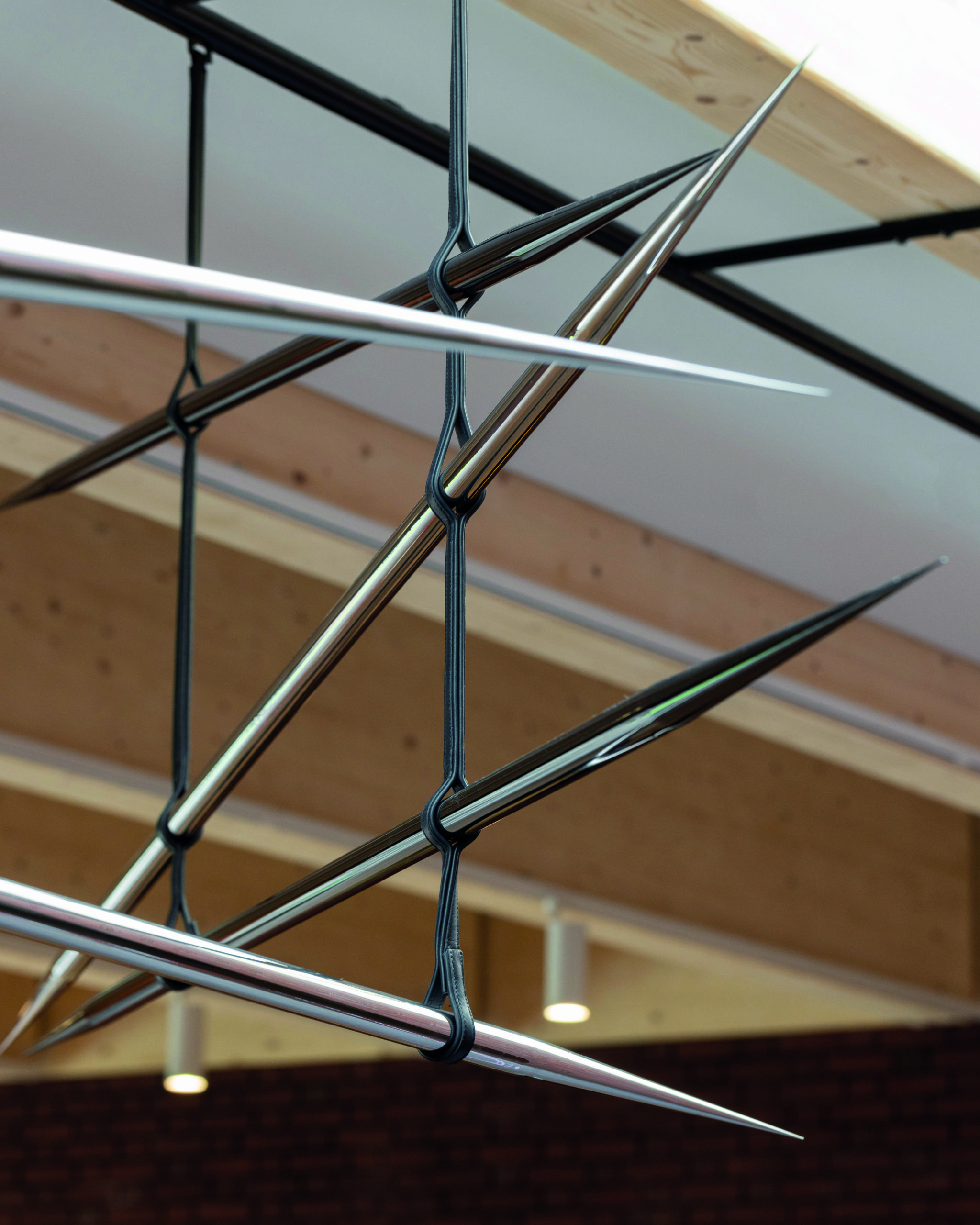
“Precise gestures” Ateliers Hermès – Œuvre Emmanuel Saulnier Normandy France © Lina Ghotmeh – Architecture. Photo: © Tadzio / © Hermès 2023
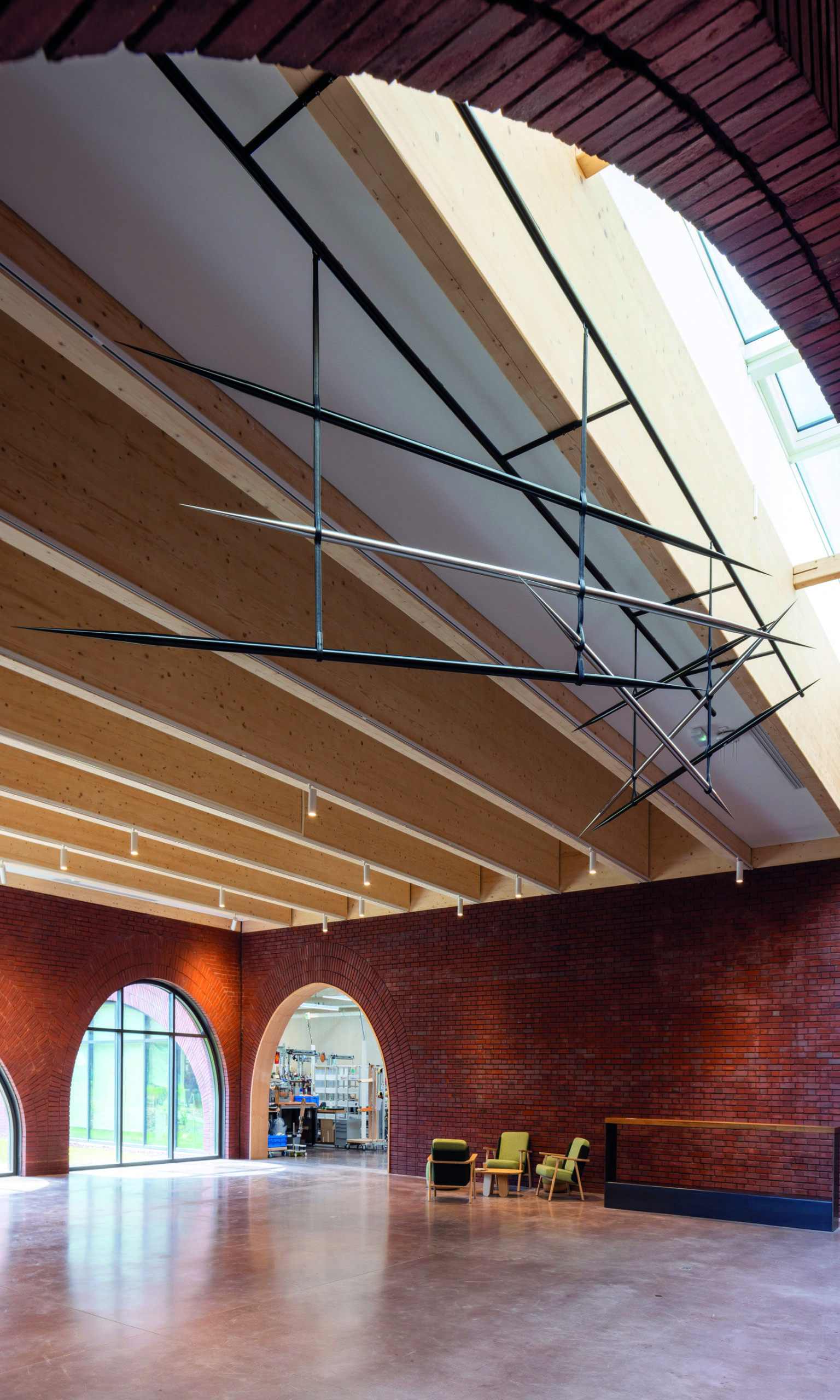
“Precise gestures” Ateliers Hermès – Œuvre Emmanuel Saulnier Normandy France © Lina Ghotmeh – Architecture. Photo: © Tadzio / © Hermès 2023
